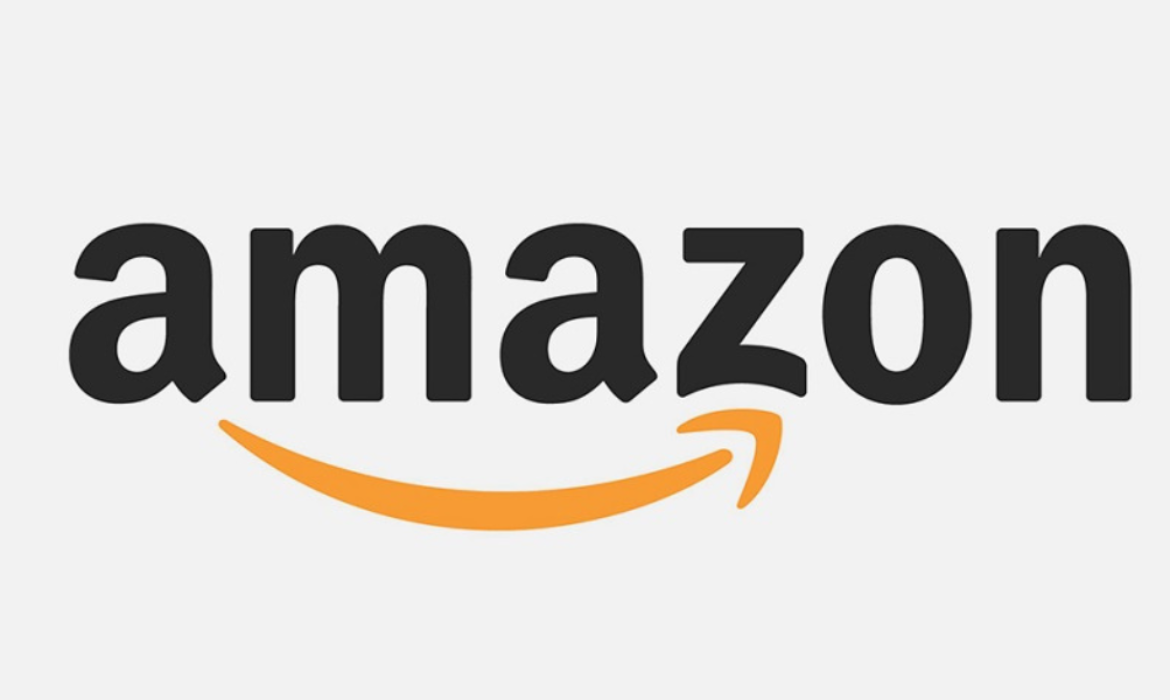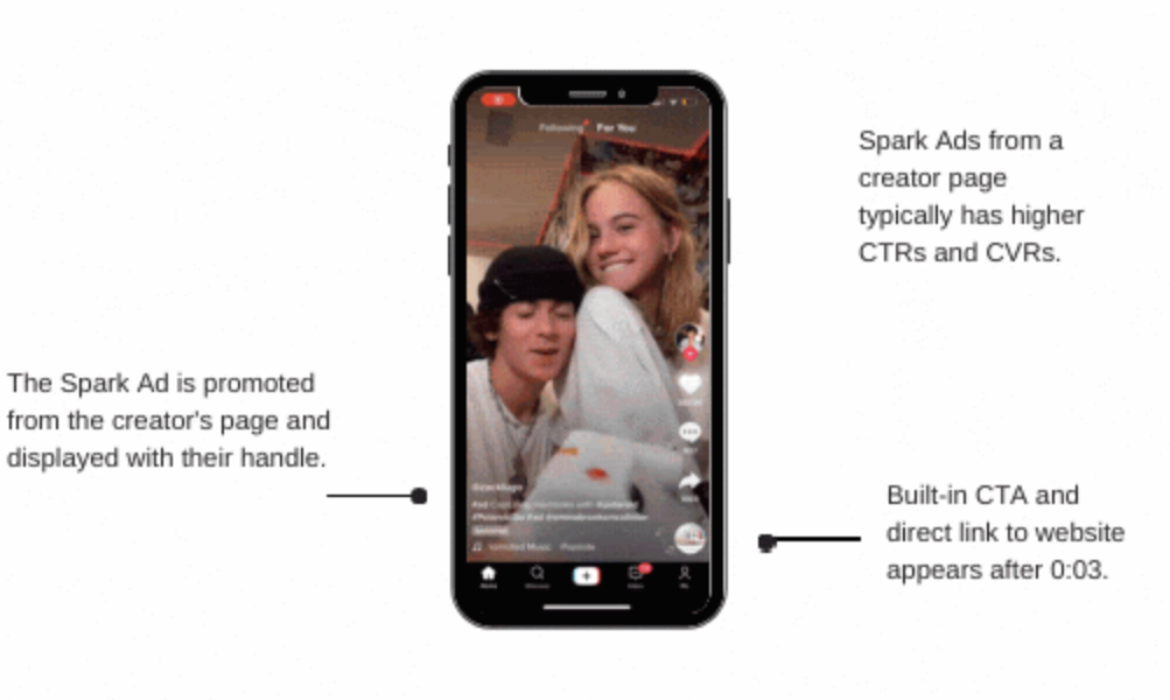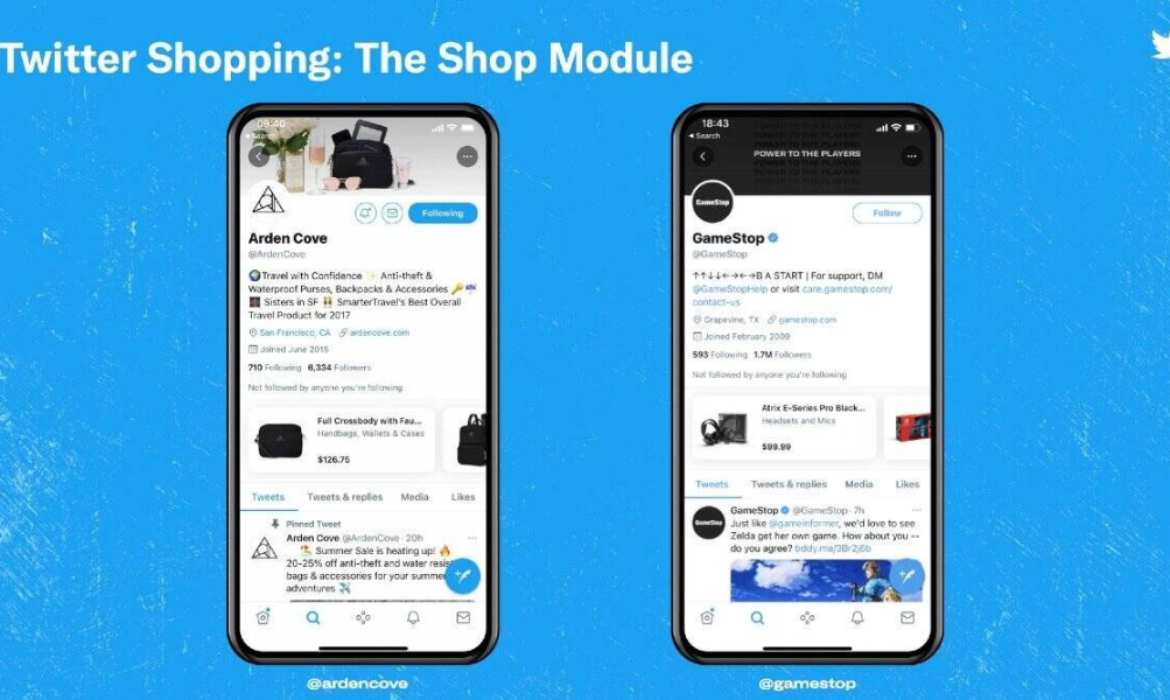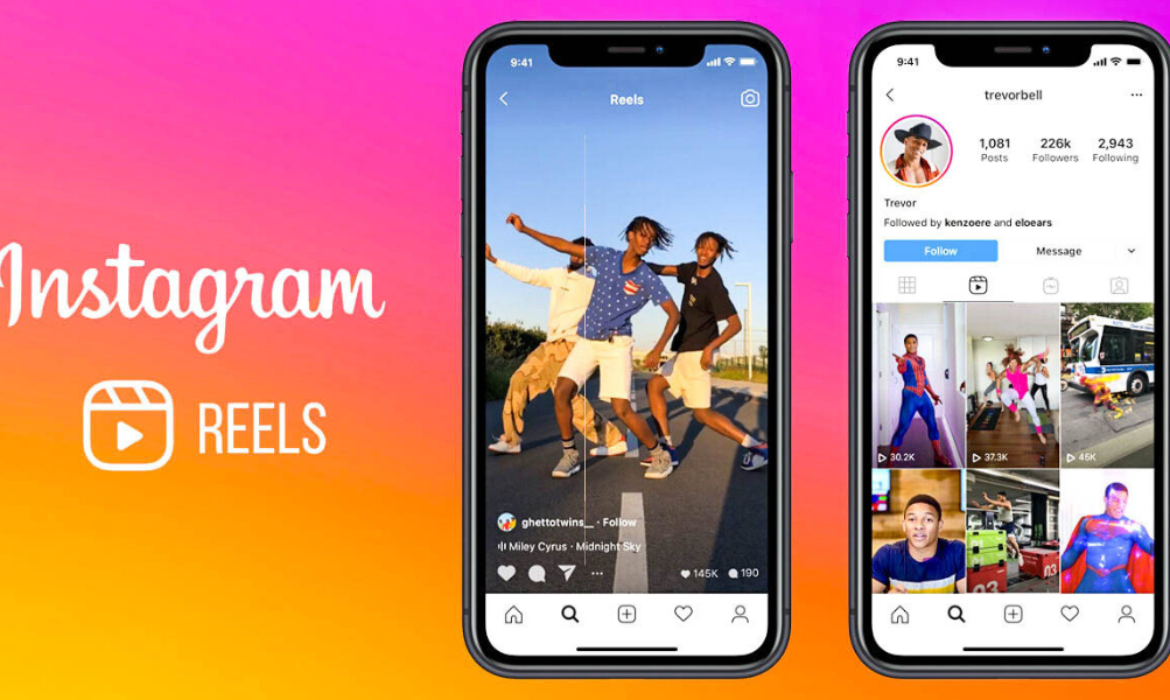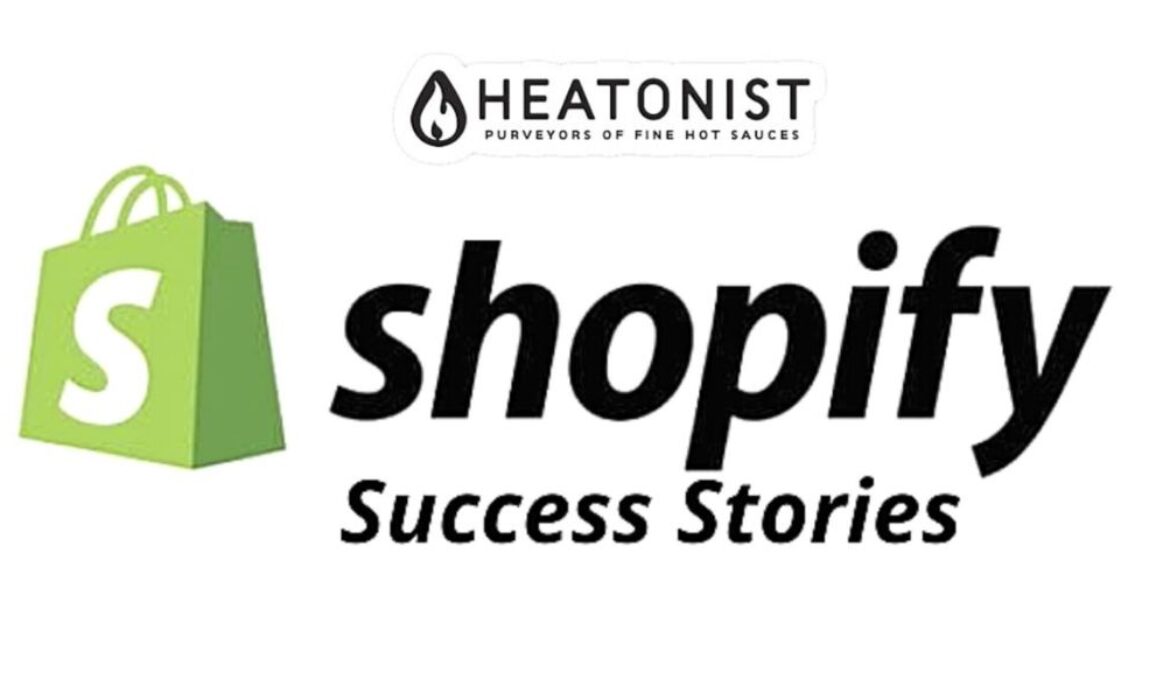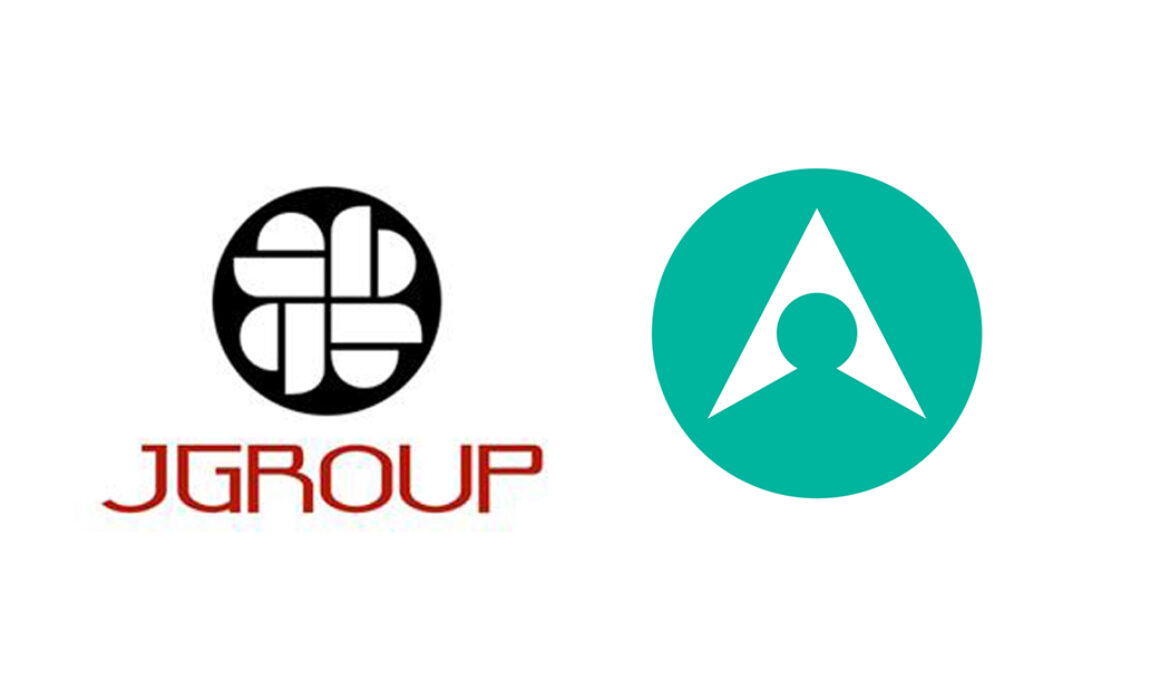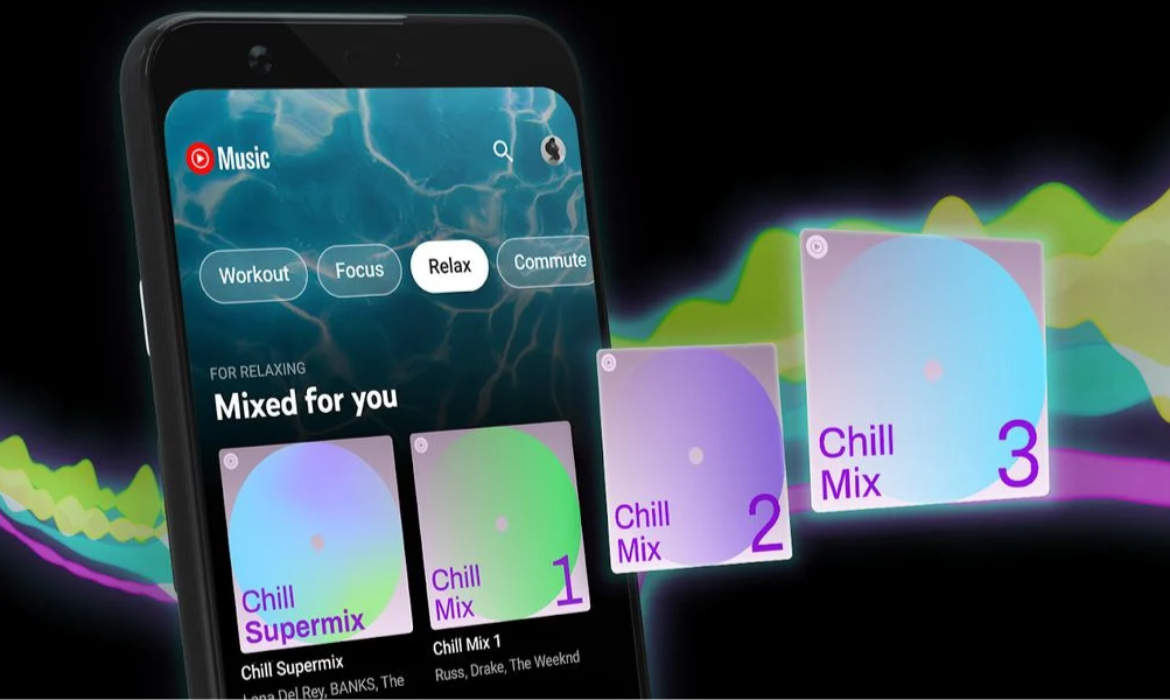Facebook Plans a Privacy-Focused Approach to Rebuilt Its Ad System
A remarkable shift by Facebook is underway as it plans a new privacy-focused revamp of its advertising system. It reveals to place more value on user privacy and less reliance on data collection. The social giant business is known for its ability to track users across the internet and utilize the information for its ad targeting processes. Owing to impending regulation and data collection limitations, it is working to create a system that delivers personalized ads without any individual user’s data. Facebook’s VP of product marketing, Graham Mudd explained,
With Apple and Google continuing to make changes via their browsers and operating systems, and with the changing privacy regulatory landscape, it’s important to acknowledge that digital advertising must evolve to become less reliant on individual third-party data. That’s why we’ve been investing in a multi-year effort to build a portfolio of privacy-enhancing technologies and collaborate with the industry on these and other standards that will support this next era.
The privacy-enhancing technology includes cryptography and statistical techniques that will improve ad measurement while relying less on individual data.
We are optimistic that new privacy-enhancing technologies will prove that personalization remains possible and effective as our industry evolves to become less reliant on individual third-party data. These technologies will help us minimize the amount of personal information we process, while still allowing us to show people relevant ads and measure ad effectiveness for advertisers.
Another key area that the social giant is exploring is ‘on-device learning ’. It is a technology that will process data locally on their device rather than sending individual data to a remote server or cloud to determine the best ads for the user. The results are later sent in an anonymous format to the advertisers. However, Graham Mudd explained the challenge in an interview with The Verge,
I think one of the challenges with on-device learning is that the compute resources required to do it are obviously under the control of the operating systems themselves.
The stakes couldn’t be higher for Facebook to get the systems right. Graham Mudd said that,
We definitely see that personalization will evolve very meaningfully over the course of the next five years. And that invest in Privacy-Focused will benefit all of our customers and enable us to help shape that future state of the ads ecosystem.
Facebook’s major changes come amidst government scrutiny and Apple’s App Tracking Transparency (ATT) update. Furthermore, even Google is exploring an advertising system that is more user-privacy-centric.

Credit: Social Media Today
Apple’s new prompt to ask for permission to track the users for targeted ads is likely to hurt Facebook’s revenue growth. However, the true impact of prompt is still evolving and the report shows that not many iOS users are opting for app tracking. Therefore, this leads to a broad range of data tools that are required to attribute ad responses. Facebook is developing a new range of options on this front.
Providing more insight the social firm is working on privacy-enhancing technologies (PETs) for ads that will minimize data collection, protect personal information while preserving ad measurements.

So, it is working to explore various ways to implement these approaches to new measurement solutions,
Last year we began testing our Private Lift Measurement solution with select partners, which uses a privacy-enhancing technology called secure multi-party computation. This helps advertisers understand how their campaigns are performing while adding extra layers of privacy to limit the information that can be learned by the advertiser or Facebook. This solution will be broadly available to advertisers next year.
To give you a brief, Secure multi-party computation (MPC) allows two or more organizations to work together while limiting the information that either party can learn. Data is encrypted end-to-end: while in transit, in storage, and in use, ensuring neither party can see the other’s data.
The social giant emphasizes that for these technologies to be successful, they will need industry cooperation.
These technologies will only be successful for people and businesses of all sizes if there is industry collaboration and a shared set of standards. That’s why we are calling on platforms, publishers, developers, and other industry participants to work together — on these technologies and other privacy-focused standards and practices.
Trade Desk Doubles The Revenue, CTV Drives Earnings
The digital advertising firm Trade Desk reported revenues of $280 million for Q2, representing a growth rate of 101% Y-O-Y. The growth rate is driven by strong growth in Connected TV (CTV). Its revenues were a major piece of the gain. In an earnings call on Monday, Jeff Green, founder, and CEO of The Trade Desk said:
“We have nearly 10,000 CTV advertisers on our platform, up over 50% compared to last year.”
He further added that through the first half of 2021, brands spending more than $1 million in CTV on their platform have already doubled year-over-year. CTV is the fastest-growing channel and growing as a percentage of overall revenue. It is completely driven by customers in the form of content subscriptions. Its supply hit the roof during the pandemic. Green said,
“One thing we constantly say to advertisers is that whatever you thought you knew about the scale and reach in CTV six months ago has changed dramatically.”
The advertisers growing demand in the Connected TV space especially for premium ad inventory led to the company’s strong revenues. The shift in the behavior of the advertisers is disrupting the traditional TV buying ads- where brands commit in advance to spend on TV ad inventory even before the commercial releases. There is a paradigm shift of advertisers transitioning to digital TV which offers flexibility and data for ad targeting. The ad tech company is acting as a clearinghouse for CTV platforms to funnel ad inventory to digital buyers and is in direct competition with YouTube, Hulu, Roku, and more. Trade Desk is grabbing ad dollars from brands like Mondeléz and Ford. Green also mentioned a food giant brand that shifted a quarter budget of linear TV to CTV.
“We are seeing many brands shift TV budgets to the data-driven precision of CTV.”
On the other hand, Trade Desk is positioning itself as an alternative to the walled gardens and launched the new ad-buying interface Solimar recently. The Trade Desk is trying to develop an open programmatic approach that lets the advertisers access audience ID and export data to their own database. At the same time, walled gardens don’t allow to extract data and restrict data sharing across platforms.
Many broadcast companies are early adopters of the Unified ID 2.0 (UID2) standard, a replacement for third-party cookies. In recent weeks, as reported by Adweek, Interpublic Group joined the list to support UID2 along with Omnicom Media Group and Publicis Groupe. Green is bullish on consumers’ readiness to exchange data for more information from brands.
On the call, Trade Desk emphasized two key drivers that determine future growth – the rise of CTV and its data policies. It is just beginning to witness advertisers moving as much as one-quarter of media budgets to CTV to minimize waste.
Trade Desk expects third-quarter revenues of at least $282 million.
Amazon’s Advertising Business Surges by 87% To Nearly $8 Billion
Key Points:
- Amazon’s “Other” category which primarily includes sales of advertising services, as well as sales related to other services offerings, grew a whopping 87% Y-o-Y in the Q 2.
- Amazon CFO Brian Olsavsky noted that the advertising business is a part of the company’s ‘flywheel’.
- He further cited on a media call that new products and functionality for factors like high demand, click through, and high bid rates.
- Amazon’s grabbed a 10% share of the entire U.S advertising market and is anticipated to rise further as trends show that online shopping is here to stay.
Amazon’s advertising business continues to surge, becoming one of the key sources of revenue for the company. The company said its ‘Others’ category generated sales of $7.9 billion, up a whopping 87% from Y-o-Y in the second quarter. The rate in the year-ago quarter was 41%.
The e-commerce giant’s ‘Others’ umbrella is led primarily by advertising as well as includes cloud computing and subscription arms. Amazon recorded total retail sales of $ 113 billion, an increase of 27% Y-o-Y. On the other hand, Amazon Web services and cloud computing products displayed robust growth as the sales grew 37% Y-O-Y.
Advertising is a high-margin business that contributed highly to Amazon’s profits. According to e-Marketer, Amazon’s share of the US digital ad market exceeded 10% last year, strengthening its position as the No. 3 ad publisher.
In its earnings release, Amazon offered some insights into the progress of the advertising side of the business,
“Amazon Advertising launched over 40 new features and self-service capabilities, making it easier for sellers, companies and authors to grow their businesses by helping customers discover their brands and products.
Recent launches include regional sponsored product campaign creation tools; access to educational, technical, and marketing resources via the Partner Network; and a simplified creative asset management solution.”
Furthermore, it said it also expanded the services in Australia, Europe, India, Japan, and Saudi Arabia, creating more opportunities for local and global sellers and brands.
Though the pandemic has affected certain segments of advertising spend, digital advertising has gained immense momentum due to online shopping trends. Amazon has also benefited from it but majorly generate its ad revenues from charging companies to promote their products on Amazon’s online marketplace.
Amazon also drives ad revenues from the online streaming businesses with Fire TV, IMDb Tv, and Twitch. Recently, the IMDb TV streaming service inked a licensing deal with Universal Filmed Entertainment Group. The company also announced it will exclusively stream Thursday Night Football, further boosting Amazon’s streaming ad ambitions. The e-commerce giant noted that it reaches 120 million monthly viewers on Amazon streaming services.
To maintain the momentum, Amazon has also launched bonus programs for merchants and made some of the privacy-related changes affecting the digital ad world.
TikTok For Business Introduces New Ad Format With Spark Ads
TikTok for Business launched Spark Ads- a new native ad display format that allows brands and businesses not only to boost their own popular organic posts but also amplify relevant content shared by the community. The short video sharing app announced the launch of the ad format in the Middle East, Africa, and Turkey region.
TikTok for Business is a global brand and is designed to provide marketers and brands technological innovations to be creative and engage the TikTok community. Brands looking to build a strong content strategy can scale up original creative videos seamlessly through Spark Ads. The format allows brands to measure the success of their campaigns including video view and conversion along with amplifying existing organic video. Furthermore, brands can keep the fun going with TikTok’s two popular features Stitch and Duet that allow users to reinterpret, reinvent, and build on creativity.
Spark ads are different from regular ads as the former allows advertisers to promote videos created by others with their permission. It allows brands to connect with the creators who help bring products and services to life without any middleman. Shant Oknayan, General Manager, Global Business Solutions, Middle East Africa Turkey, and Pakistan, TikTok said,
“With Spark Ads, brands can build long-lasting connections that are authentic and rooted in the community while also delivering sustainable and impactful business value. We’re excited to roll out this new offering to the region, providing businesses across the region with even more opportunities to drive deeper engagement and connection with their audience.”
Twitter Enters into eCommerce, Tests ‘Shop Module’ Feature For iOs Users
Twitter enters a robust social media eCommerce market and unveiled the pilot of the Shop Module in the U.S. It allows the user to directly shop the products from a business profile without leaving the Twitter app.
Twitter explained in its blog post,
“The Shop Module is a dedicated space at the top of a profile where businesses can showcase their products. When people visit a profile with the Shop Module enabled, they can scroll through the carousel of products and tap through on a single product to learn more and purchase – seamlessly in an in-app browser, without having to leave Twitter.”
US Twitter users can scroll through the carousel of products on their Apple devices. They can tap through a single product and learn more about it and decide whether to buy or not. The company further added,
“With this pilot, we’ll get to explore how our engaged, responsive and chatty audience reacts to products that are emotionally charged — like a new jersey from your favorite sports team — or that provide lasting impact — like a new skincare regimen. And, fundamentally, it’ll give us the chance to keep learning about which shopping experiences people prefer on Twitter.”
It is not surprising that Twitter is also jumping the bandwagon with Facebook Marketplace, TikTok, Whatsapp, and Instagram being big competitors. As quoted by Business Insider, Twitter’s Revenue Product Lead Bruce Falck said,
“We know people come to Twitter to interact with brands and discuss their favorite products. Imagine easily discovering, and quickly purchasing a new skincare product or trendy sneaker from a brand you follow with only a few clicks.”
Even though Twitter said that they are in early explorations but significant opportunities lie ahead. With Shop Module, the social media giant intends to capitalize on the booming social commerce market that grew rapidly during the coronavirus pandemic. Twitter is initially testing with a handful of brands before making any decision of a broader rollout. Stay Tuned, we will keep you updated on the progress.

GameStop, Arden, and Cove are from the handful of brands participating in the pilot project I Credit: TheVerve
Instagram’s Reels, Tik-Tok’s Clone, Is Now For 60 seconds Long
Instagram Reels doubled the previous time- limit of 30 seconds and added functionality for a caption sticker.
Now, you can record Reels up to one minute long. Instagram announced that the Reels time limit is doubled to 60 seconds for all users.
Reels. up to 60 secs. starting today. pic.twitter.com/pKWIqtoXU2
— Instagram (@instagram) July 27, 2021
Within a month of its launch, Instagram extended Reels from 15 to 30 seconds. Recently, Tik Tok expanded its time limit to 3-minute, and YouTube Shorts also has a 60 second time limit, so it was unsurprising for Instagram to follow the trend. However, it is wise for Instagram to expand Reels to 60-second as it gives creators more capacity to work with.
It is mainly useful for creators who repurpose the same posts that they are uploading on TikTok or other competitor’s apps to grow their following across multiple platforms. Cross-posting is beneficial to the creators but also to Instagram, as it gives more content for Reels.
ProTip: Instagram’s algorithm doesn’t promote cross-posting content with a TikTok watermark, as it will affect your reach.
Instagram also added functionality for a caption sticker on Reels. It converts audio to text making for people who want to enjoy the Reels without sound. However, this is available only in a handful of English-speaking countries but Instagram plans to expand to other countries and languages soon.

Credit: Adweek
A Shopify Success Story- Heatonist, Purveyors Of Fine Hot Sauces
As cliche as it may sound, but “Variety is Spice of life.” Spice lovers always search for new hot sauces and Heatonist, the brainchild of Noah Chaimberg precisely has what they need. He started the business in 2013 by selling bottles sourced from independent brands on a pushcart and gradually expanded to an online hot sauce retail platform and subscription model alongside a personalized tasting room located at Williamsburg, New York.
After shifting its online store to Shopify, Heatonist witnessed tremendous growth in sales. Shopify provides all features to make a successful eCommerce website – user-friendly interface, reliable and secure domain, the capability to handle high traffic load, access to business apps, and more. It is noteworthy that Shopify powers one million businesses worldwide. Even though Heatonist runs a brick-and-mortar store, the hot sauce supplies reaches a larger audience through its online store and subscription model. The massive and positive response to its online store on Shopify emboldened Noah to entrust Shopify Fulfillment Network with his shipping needs. Furthermore, Heatonist switched to Shopify POS to take care of in-person sales and inventory for its two tasting rooms.
So, what is the business’s secret sauce? To offer fellow hot sauce lovers all-natural hot sauce made by small and independent makers all around the world as well as give a chance to taste before making a purchase.
What Makes The Brand Successful on Shopify?
It’s amusing and satirical way of branding. Heatonist “Purveyors Of Fine Hot Sauces” is the world’s most trafficked and top hot sauce website. Hover your cursor on each hot sauce bottle displayed to find an entertaining and playful description that echoes the tone of sophisticated wine connoisseurs.

Image Credit: Linkody
The descriptors are informative that exhibit a wide range of hot sauces from “aromatic” and “herbaceous” to “pepper” and “peach.” It also offers a live chat with their “hot sauce sommeliers” for guided tastings similar to their physical storefront. Adding to the wine analogy, it has a humorous and witty stance on hot sauces and offers the same cachet that is usually reserved for wines.

Image Credit: Heatonist Instagram page
The dynamic brand also has a remarkable presence on various social media channels. Be it the creative content on Instagram or curation of retweets related to popular Hot One series or hot sauces and any product announcements. Brand consistency, refreshing content, and customer experience distinguish Heatonist from its competitors. Apart from its social media engagement, it gets granular and specific with details that add to its branding efforts such as:
- Email Id: ilovehotsauce@heatonist.com
- Instagram hashtag #stayspicy
- Dedicated a product page for the hot sauces shown on the popular celebrity interview series Hot Ones on YouTube.
- Add a special and personal touch by stamping a handwritten note “Packed With Love” on every online order.
- Creating a “Heatonist Sauciety” as a part of the reward program and calling all members “Sauce-a-holics”.
How The Brand Found A Reliable Partner In Shopify Fulfillment Network?
With growing volumes and sales climbing up, packaging became more time and space consuming. For scalability and better customer experience, Heatonist was in search of third party logistics (3PL). However, previous experience with 3PL providers left a bad taste in the mouth and raised new problems. Customers complained about the packaging and delay in orders. The brand had transportation support but it was a challenge controlling how 3PL providers packaged and dispatched orders. In 2019, Shopify announced Shopify Fulfilment Network. A fulfilling experience with Shopify over its eCommerce solution and Point of Sales system encouraged Noah Chaimberg to opt for Shopify Fulfillment Network (SFN).
Fortunately, laying all eggs in the Shopify basket worked for the company and finally found a fulfillment solution. SFN met the company’s standards of packaging and the team’s commitment to consider every minute detail helped the Heatonist to grow. The costing of SFN is as per industry standard and is proved to be a highly dependable and efficient fulfillment partner. This partnership allowed Heatonist to increase its sales volume considerably and take advantage of any unexpected sales spikes. Heatonist enjoyed the following advantages:
- Guaranteed three-day shipping with improved customer experience
- No longer warning customers of potential fulfillment delays on the website.
- Opportunity to focus on building its brand—not logistics
SFN takes care of the heavy lifting as the shipping needs are meticulously met allowing Noah and the team to focus on other aspects of the business.
“Working with the team at Shopify Fulfillment Network has been great because it’s given us the confidence to focus on other areas of our business. Before, we were always holding the reins on growth. Now, having confidence on the fulfillment side lets us say, ‘Okay, how do we want to grow this company?”
-Noah Chaimberg
Final Words
There are no shortcuts to success and studying this brilliant and exemplary example can guide you in creating a successful Shopify store. Insights and learnings from such eCommerce victories can pave the way to build your brand. If you are looking for versatility, technical support, and the best user experience for your eCommerce store, Shopify it is! The journey of Heatonist starting from a pushcart to being the most trafficked hot sauce website in the world is inspiring. In addition to everything else, it has given all the small indie makers of all-natural hot sauce a chance to grow in this ecosystem. Remember the world is your oyster! The stage is ready and just a few clicks away to build your dream store.
Verizon Media Rolls Out Connect ID To Replace Third Party Cookies
Verizon Media this week rolled out a new unified identity solution Connect ID in an industry-wide effort to help advertisers and marketers to transition from using third-party data as the center of online ad targeting.
The third-party cookies will soon be redundant as Google and Apple take steps to limit audience tracking owing to consumer data privacy concerns. Though the advertising industry has seen numerous innovations by many growing companies such as Lotame introduced Panorama ID, Verizon claims Connect ID is powered by direct relationships with 900 million global consumers.
The company has valuable first-party data about the activities of millions of customers based on its 30+ owned and operated consumer brands including Yahoo (content, search, and mail), AOL, and TechCrunch. Verizon Media will generate 200 billion data signals based on deterministic first-party data to create an identity graph that can help advertisers target and track audiences across devices. With Connect Id, the company aims to provide audience targeting on a large scale.
The company is promoting Connect ID to more advertisers and publishers to use its programmatic platform to buy and sell digital ad placements in an ongoing effort to capture the market share of the industry’s biggest players. The company has a full-stack advertising technology solution with a demand-side platform (DSP) for buyers and a sell-side platform (SSP) for content providers like Newsweek that are looking to unlock the full value of their advertising inventories. Dev Pragad, CEO of Newsweek, said,
We want to deliver the best experience possible for our audiences as well as maximize revenue for the premium content we produce. To ensure we can maximize our clients’ user experience while maximizing our revenues, we need partners like Verizon Media who can connect our audiences with quality advertisers and experiences, maximize yield and ensure our audiences’ privacy choices are respected. That’s why we’ve signed up for Verizon Media ConnectID.
As a part of the launch of Connect Id, the company also announced several partnerships with leading data providers like Acxiom, Adstra, Equifax IXI, Experian, Neustar, TransUnion, and Throttle. Concurrently, Verizon Media Connect Id is also working with IAB Tech Lab programs to develop industry-wide pro-privacy solutions for addressability with accountability. Jordan Mitchell, SVP, Head of Consumer Privacy, Identity, and Data, IAB Tech Lab, said,
IAB Tech Lab is proud to have Verizon Media involved in the development of new privacy-preserving addressability standards and industry accountability programs through Project Rearc, and we look forward to their support of these standards and programs once they are released.
The unified ID helps advertisers buy, measure, and optimize ads while enabling publishers to manage, monetize, and navigate audiences–all without third-party cookies. The company says adoption of the unified solution delivered a 33% lift in performance compared to third-party cookies. Iván Markman, Chief Business Officer at Verizon Media told AdWeek,
Most of the identity solutions out there are largely dependent on third-party integrations. Most of the companies don’t really own the customer relationships, and more important they won’t have the assets to provide a value exchange.
Presently, Verizon Media ConnectID is available in North America, APAC and select LATAM markets at launch and will soon roll out to more markets.
JGroup and Blis To Partner For Exclusive Location-Based Advertising In MENA
JGroup, a Lebanon-based holding company with a presence across the Middle East, Europe, Asia, and the United States announces strategic partnership with Blis for location-based advertising in the Middle East and Nort Africa (MENA) region. Through this partnership, JGroup and Blis, a leader in location-powered advertising and analytics intend to leverage their strengths to help brands understand, reach, and engage customers in the MENA region to deliver measurable results.
This new partnership is another feather to JGroup’s vast pool of digital advertising products and services because location-powered data is the most accurate indicator of ’real’ behavior and intent at scale when compared with any other type of data. With unprecedented events this year, there is a huge shift in consumer behavior where most people do not prefer to go out. Therefore, JGroup will make Blis solutions available to all potential and existing customers in the digital advertising space to ensure they meet their target audience at the right time and place. Imad Jomaa, Founder and President of JGroup said,
“We’ve all experienced changes to our daily routines this year and location-based advertising capabilities have enabled more refined, more relevant, more transparent, and more relatable campaigns for consumers. We’re delighted to be joining forces with Blis, a company that continues to distinguish itself as an innovative and transparent leader, to deepen penetration of this technology in the region.”
Blis Smart platform provides incomparable safety, transparency, and accuracy. In fact, Blis solutions are privacy-focused and enable effective planning, activation, and measurement for marketers. The new partnership will enable JGroup’s existing media customers in the region to better understand their audiences’ real-world behavior and create targeted strategies to drive real-time results. Blis Global Commercial Officer, Dave King said,
“There is an enormous opportunity for brands across the Middle East and North Africa to better understand and engage with their consumers. Globally, our clients trust the combination of our advanced proprietary technology and strategic expertise Blis offers. Together with JGroup, we’re building upon our existing presence and customer relationships in the region, to give more brands and agencies the power to reach relevant audiences with advertising that cuts through and drives real results.”
The MENA region’s advertising and marketing landscape is changing and attracting investments. The JGroup and Blis partnership is contributing to the growth and providing new opportunities to the next generation of insight-driven marketing. This partnership combines Blis’ technologies and products with JGroup’s extensive media network and digital assets in the Middle East through its media arm, Promofix. Imad Jomaa further said,
“Location-based advertising is a powerful tool and brands in the region are only beginning to see the opportunities and possibilities.”
YouTube Introduces New Audio Ads To Target Music Fans
In a bid to help brands grow further and better reach music fans on its platform, YouTube launches new audio ads and music lineups.
With people shelter-in-place due to pandemic and music concerts are closed, users are increasingly turning to YouTube to listen to a podcast while doing regular chores or working out while listening to albums. In an effort to adapt to this consumer behavior and monetize the moments on YouTube, the platform rolled out audio ads in beta.
The 15-second audio ads are now available to all advertisers globally via auction on Google Ads and Display Video 360 on a CPM basis with the same audience targeting options, bidding strategies and Brand Lift measurement capabilities, and brand safety features as YouTube video campaigns.
These ads won’t be audio-only but the audio soundtrack plays the lead role in delivering the brand message. The visual component is mainly a still image or basic animation. In the blog post, YouTube says the key that the audio message should carry is: “Think: If I close my eyes, I can still clearly understand what this ad is about.”
The company claims that in months of alpha testing,
“75% of audio ad campaigns on YouTube resulted in a significant lift in brand awareness.”
For instance, this Shutterfly Audio Ad resulted in a 14 percent lift in ad recall and a 2 percent lift in favorability among their target audience.
YouTube is also introducing dynamic music lineups that allow advertisers to target campaigns at collections of music channels on YouTube in the popular genre such as Latin, K-pop, country, rap, and hip-hop. Marketers can buy ads targeted by moods or interests like fitness or meditation. Let’s say if a brand prefers to run ads at any given moment, they can buy against the Top 100 — powered by YouTube Charts. In head-to-head competition with Spotify that pioneered in selling only audio-ads for years, YouTube expects the move to boost ad revenue that it generates from music on the platform.
In another blog post, Lyor Cohen, global head of music for YouTube, positioned the new ad push as an effort to help artists and record label partners earn more revenue from this new ad format. He further explained, more than 2 billion logged-in viewers are watching at least one music video each month whereas 60% of music consumption on YouTube happens on mobile devices,4 where background play is not available.
“Regardless of when and how people are tuning in, we have ways to help advertisers connect, even when they’re consuming music in the background. Now you can complement the moments your consumers are watching, by engaging them in moments when they’re listening, with newly announced audio ads.”
The blog reveals more than 50% of logged-in viewers consume more than 10 minutes of music content in a day. Though, video is still the main and largest category for YouTube: 85% of music consumption on the platform is in the foreground, Adam Stewart, YouTube’s VP of sales said the remaining 15% is a ripe market to tap for audio ads.
“We know being associated with this content works, and so it’s incumbent on us to create packaged opportunities for advertisers to get close to it in whatever format they want to work in, whether that be audio, video or both.”
The audio ad on YouTube follows another audio announcement from Google earlier this year in August as it launched programmatic audio in Ad manager.



